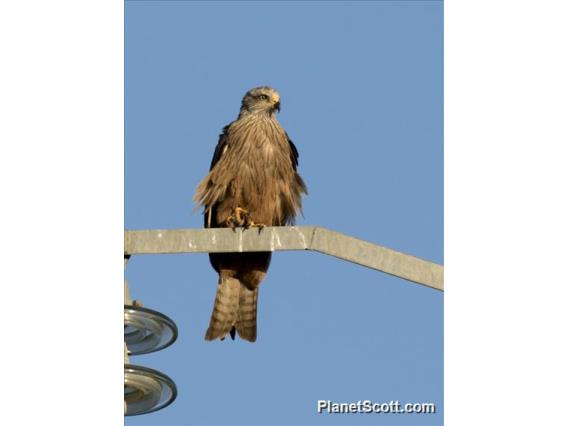Black Kite (Milvus migrans)

Black Kite (Milvus migrans)
×


Black Kite (Milvus migrans)
About Black Kite (Milvus migrans)
- Kingdom: Animals
- Phylum: Chordates
- Class: Birds
- Order: Hawks, Eagles, Kites, and Allies
- Family: Hawks, Eagles, and Kites
The black kite is a medium-sized bird of prey in the family Accipitridae, which also includes many other diurnal raptors. It is thought to be the world's most abundant species of Accipitridae, although some populations have experienced dramatic declines or fluctuations. Current global population estimates run up to 6.7 million individuals.
Source: Wikipedia
Trips
Visits
-
-
-
2002-12-10
Moremi Game Reserve - Chief's Island, Botswana -
2003-01-05
West Coast National Park, South Africa -
2003-03-06
Ngorongoro Conservation Area, TanzaniaMobbed by them while trying to eat lunch at the hippo pond. -
2005-12-31
Delhi - Tughlaqabad, India -
2008-07-16
Listvyanka, Russia -
2008-07-20
Tuva - Kyzyl, RussiaAll over the place, the photo is from a spot on the road outside of town. -
2009-07-13
Victoria Peak, Hong Kong -
2011-01-03
Addis Ababa, Ethiopia -
-
2011-01-18
Gondar, Ethiopia -
2011-01-23
Bahir Dar, Ethiopia -
2012-11-05
Davies Creek National Park, Australia -
2012-11-06
Cairns Esplanade, Australia -
2012-11-11
Lakefield National Park, Australia -
2012-11-14
Mareeba Wetlands, Australia -
2013-01-15
Halong Bay, Vietnam -
2013-02-01
Ang Trapeang Thmor, Cambodia -
2013-02-02
Pak Thale, Thailand -
2013-02-13
Kolkata, India -
2013-02-18
Guwahati, India -
2013-02-24
Sanjay Ghandi National Park, India -
2013-02-25
Mumbai, India -
2013-10-24
Nairobi National Park, Kenya -
2013-11-03
Sibiloi National Park, Kenya -
-
-
-
-
-
-
-
-
-
-
-
-
-
-
-
-
-
-
-
-
-
-
-
-
-
-
-
2017-11-16
Andasibe, Madagascar -
-
-
-
-
-
-
-
-
-
-
-
-
-
-
-
-
-
2025-02-01
Mkomazi National Park, Tanzania -
-
-
-
-
-
-









